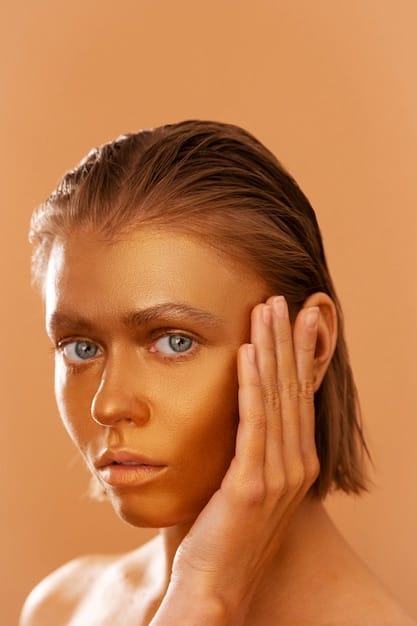
Bronzer and tinted moisturizer have become essential items in the makeup world, each serving similar but distinct purposes. Understanding their differences can help you choose the right one for your needs. Let’s dive into bronzer vs. tinted moisturizer.
Bronzer is a powdery product that adds color and glow to your skin, giving you a sun-kissed look. On the other hand, a tinted moisturizer is a liquid formula that combines moisturizing benefits with a touch of color, similar to a lightweight foundation. While both aim to give your skin a healthy glow, bronzer provides a more tanned, radiant look, whereas tinted moisturizer offers a natural, dewy complexion. Using them together can enhance your overall makeup results.
Key Differences:
1. Coverage:
Tinted moisturizers provide light coverage, perfect for hiding minor discolorations, blotches, or redness. They are not as heavy as foundations but still cover blemishes effectively. Bronzers offer medium coverage but are not ideal for concealing significant flaws like acne scars.
2. Pigmentation:
Tinted moisturizers have minimal pigmentation, designed to blend seamlessly with your skin tone. Bronzers, rich in pigment, are meant to give you a sun-kissed glow. Choose a bronzer for a darker skin tone and a tinted moisturizer for a natural look with light coverage.
3. Purpose:
Bronzer adds a sun-kissed glow and can contour your face, creating the appearance of slimmer features. Tinted moisturizers even out your skin tone while providing hydration, merging skincare and makeup benefits.
4. SPF Protection:
Most tinted moisturizers include SPF, making them suitable for sun exposure. Bronzers usually lack significant SPF protection since they are not meant to cover your entire face.
5. Benefits:
Tinted moisturizers hydrate and protect the skin, often containing beneficial ingredients like antioxidants and vitamins. Bronzers provide a tanned appearance without sun exposure, ideal for achieving a glowing look quickly.
6. Finish:
Bronzers can have either a matte or shimmery finish, mimicking a sunlit effect. Tinted moisturizers tend to give a dewy, hydrated finish for an all-over glow.
7. Versatility:
Bronzer can be used as eyeshadow, contour powder, or highlighter, making it a versatile product. Tinted moisturizers can function as a primer or provide standalone light coverage.
Using Bronzers:
Apply bronzer with a brush or sponge after your daily moisturizer or foundation. Start at the center of your forehead and move towards your cheekbones, blending carefully to avoid streaks. A little goes a long way due to its pigmentation.
Drawbacks of Bronzers:
– Blending Issues: Overdoing it can make your face look dirty or oily.
– Excessive Darkness: Improper application can result in uneven skin tone.
– Unnatural Look: Applying too much can make the tan look fake.
Using Tinted Moisturizers:
Tinted moisturizers are perfect for quick application. Use your fingertips or a foundation brush to blend it into your skin, in circular motions. It can be applied over a regular moisturizer or used as a primer for foundation.
Drawbacks of Tinted Moisturizers:
– Limited Coverage: They only hide minor imperfections and may not be suitable for severe acne or uneven skin tone.
– Short Wear Time: They tend to fade faster than foundations.
– Oily Finish: Some formulas can make your skin feel greasy, particularly those with a dewy finish.
Conclusion:
Choosing between bronzer and tinted moisturizer depends on your desired look and coverage needs. Both are valuable additions to your makeup routine but serve different purposes. Utilize each product effectively to enhance your beauty regimen.
For more detailed tips and expert advice, explore other parts of the article to get the most out of bronzers and tinted moisturizers.